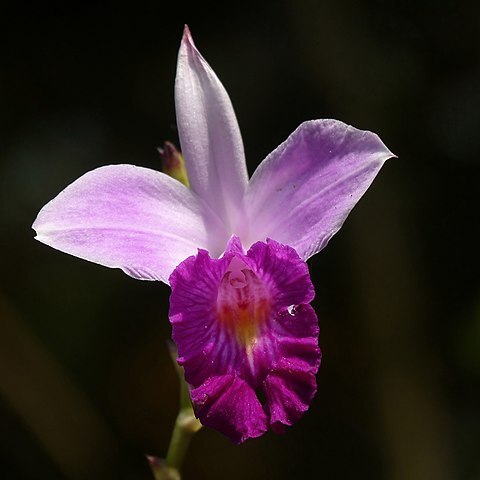Herbs, terrestrial. Rhizome ovoid, stout; roots many, filiform, slender, fibrous. Stem erect, tufted at base, reedlike, unbranched or occasionally branched when older, leafy. Leaves ± distichous, linear-lanceolate, conduplicate and sheathing at base, apex acute. Inflorescence terminal, unbranched or occasionally shortly branched, few to many flowered; floral bracts persistent, triangular, small. Flowers resupinate, opening one at a time, large; pedicel and ovary elongate, slender. Sepals similar, elliptic or lanceolate, apex acute; lateral sepals usually connivent below lip. Petals spreading, ovate-elliptic or obovate, apex acute; lip adnate to base of column, obovate, not spurred, 3-lobed; disk with 3 longitudinal pubescent lamellae; lateral lobes erect, embracing column, rounded; mid-lobe spreading, apex divided. Column long, straight, dilated and narrowly winged toward apex; anther terminal, incumbent; pollinia 8, in 2 groups, ± waxy, with short caudicles, attached to sticky viscidia; stigma transversely oblong, broad. Capsule cylindric-fusiform, large, ridged.
More
Clumping terrestrial orchid with crowded reed-like canes, each cane with numerous grass-like leaves. Inflorescences are terminal, producing flowers in succession, 1 or 2 flowers open at a time. Flowers resembling a Cattleya flower, colourful with a large showy labellum. Labellum lateral lobes tightly incurved over column, midlobe broadly flared. Sepals narrow, petals much wider.

